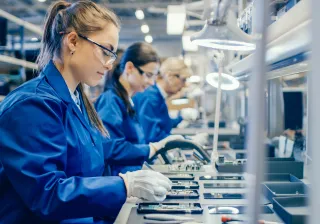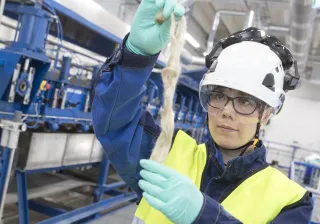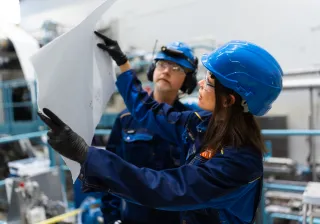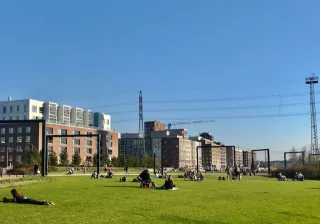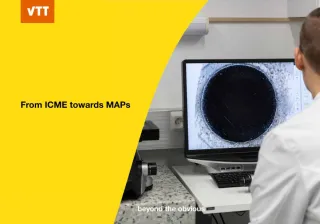Fly ash is a by-product of power plants that can contain heavy metals. In such a case, it must be separately treated or deposited in a hazardous waste landfill. To improve fly ash’s suitability for non-hazardous landfills, Valmet partnered with VTT and found a cost-efficient way to treat fly ashes. Using carbonation, VTT was able to reduce the solubility of the heavy metals in fly ash, improve the material’s suitability to non-hazardous landfills and make its further utilisation possible.
Key results
Carbonation provides a way to upcycle side streams and improve ash waste’s suitability for landfills significantly.
A successful bench-scale pilot run enabled the completion of Technology Readiness Level 4.
Valmet now has the needed insights to scale up and commercialise the solution.
Valmet is a market leader in developing and supplying process technologies, automation and services for the pulp, paper, energy and marine industries. The company is committed to moving their customers’ performance forward and developing innovative solutions for the future.
Heavy metals in fly ash make it hazardous waste
Fly ash is a very fine, powdery material produced in power plants during the combustion process. As the paints, preservatives and additives used in recovered fuels contain lead, zinc and copper, for example, these heavy metals also end up in the fly ashes. Due to the presence of these easily soluble heavy metals, fly ash is classified as hazardous waste. It has to be treated separately or deposited in a hazardous waste landfill, which incurs additional costs.
To find a simple and cost-efficient way to treat fly ash and to improve its suitability for landfills, Valmet partnered with VTT. In addition to helping their customers cut costs, Valmet wanted to provide a way to utilise side streams and reduce the amount of waste produced.
“We want to support our customers in achieving their zero waste goals and enable the recycling of materials,” says Jere Jakonen, Product Engineer at Valmet.
Using flue gases to decrease the solubility of heavy metals in fly ash
The solution had to be simple, straightforward and cost-effective to align with the possible benefits of treating fly ash waste. What is more, it needed to be applicable to a power plant environment. After initial analyses, carbonation was deemed the best approach.
During carbonation, fly ashes are mixed with water and flue gases containing carbon dioxide in a hydrometallurgical reactor to make the heavy metals accumulated in the ash less soluble.
“The flue gases generated by the power plant contain carbon dioxide, making the raw material needed for carbonation easily available,” says Teppo Riihimäki, Senior Scientist at VTT. “Carbon dioxide is used to stabilise the ash in a way that decreases the solubility of heavy metals and reduces the alkaline pH. As a result, the suitability of fly ash for landfill disposal improves and its further utilisation gets easier.”

VTT’s unique infrastructure enables a bench-scale pilot run and completion of Technology Readiness Level 4
To kick off the project, VTT conducted batch tests and landfill suitability testing. Once the initial lab tests were done, it was time for a week-long bench-scale pilot run to determine optimal conditions and recycle feeds to achieve minimum solubility.
“Being able to be at the lab during the test runs was a plus, as it made things more concrete,” Jakonen says. “We had some great conversations with the people running the tests. It definitely gave me a better understanding of the process.”
Next, VTT created a simulation model based on the results of the pilot run. The model allowed for a more detailed estimation of plant-scale process flows, capital expenditures and operating expenses, and helped the team determine the required parameters for designing a large-scale prototype.
“In terms of technology readiness levels, we were able to go from an idea (TRL 0) to a small-scale prototype built in a laboratory environment (TRL 4),” Riihimäki celebrates.
VTT Bioruukki pilot centre houses a one-of-a-kind technology infrastructure which made VTT a natural choice as Valmet’s research partner. Bioruukki’s pilot line enables the testing of processes in continuous pilot runs that can last days, even weeks.
“Our automatically controlled flexible pilot system Flexmet is highly tailorable. We can adjust anything from the number of reactors to residence times to feed materials in order to meet the customer’s needs,” says Riihimäki.
We can adjust anything from the number of reactors to residence times to feed materials in order to meet the customer’s needs.
New business opportunities for Valmet on the horizon
By carbonating fly ash, VTT was able to improve the material’s suitability for non-hazardous landfills and make its further utilisation easier. This simple solution makes use of flue gases, an existing side stream, and eliminates the need to purchase new chemicals.
“By partnering with VTT, we were able to verify that the continuous process works as a whole,” Jakonen says. “What is more, we now have the necessary starting data for the next steps.”
Valmet and VTT share a long history of collaboration when it comes to the development of solutions and products that promote a circular economy.
“We knew VTT had the right expertise and the right infrastructure at the ready. That meant we at Valmet could concentrate fully on planning the project,” Jakonen says. “Working with VTT is smooth and easy and they always deliver what we need.”
We knew VTT had the right expertise and the right infrastructure at the ready. That meant we at Valmet could concentrate fully on planning the project.




